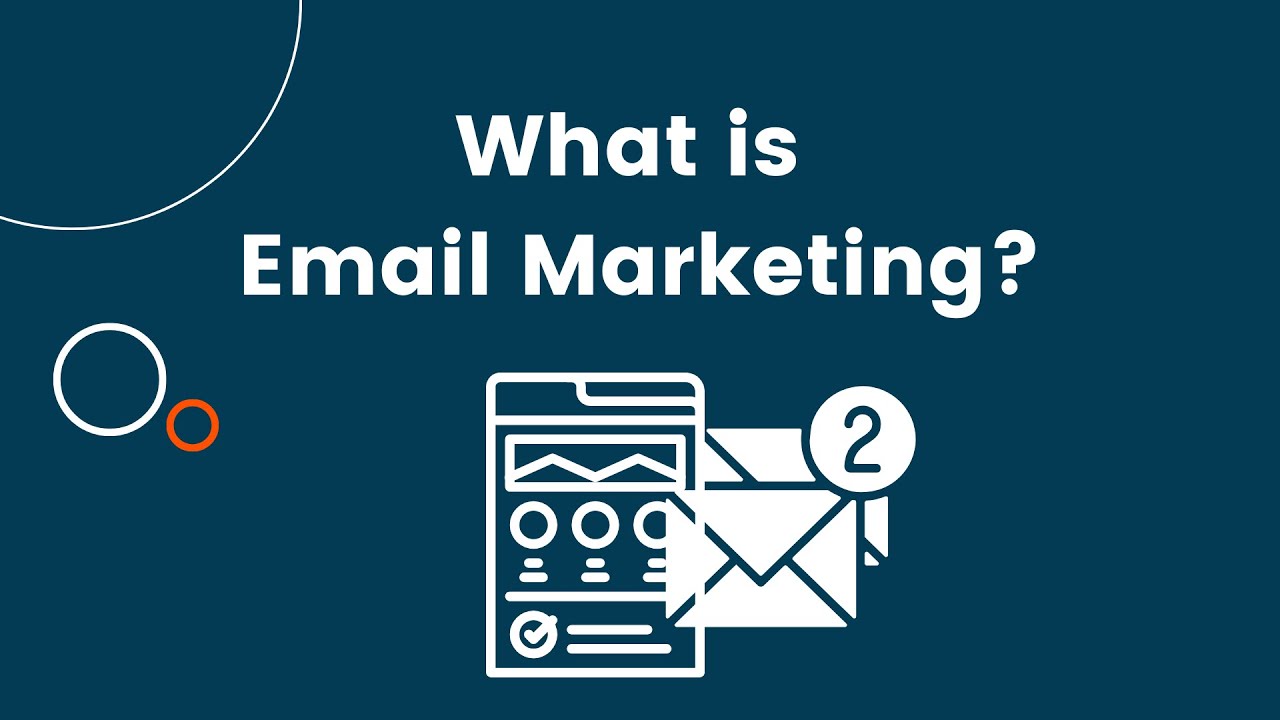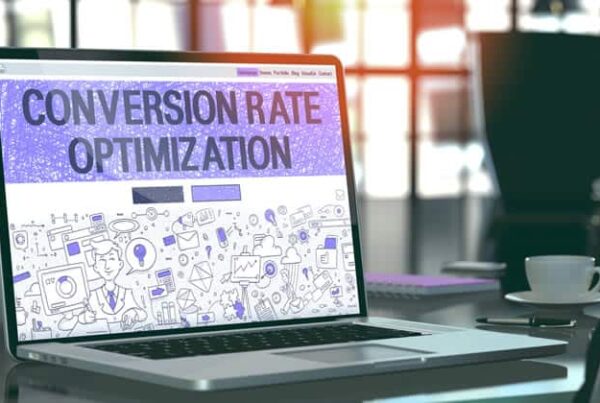Email Marketing Strategies for Increased Revenue
Is your business leveraging the power of email marketing? Studies show that email marketing is the best way to increase sales and web traffic.
For example: Email marketing strategy remains the linchpin for digital marketing success, converting subscribers to loyal customers with unparalleled return on investment.
Email Marketing by the Numbers
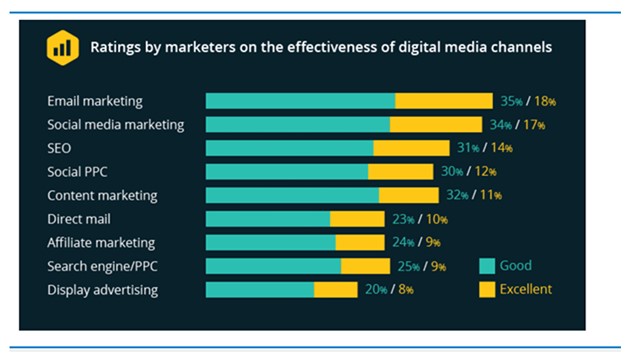 Statistics underscore email marketing’s unmatched efficacy in generating conversions and website visits.
Statistics underscore email marketing’s unmatched efficacy in generating conversions and website visits.
And with average industry open rates around 18 per cent and click-through rates (CTR) around 2.6 per cent, email campaigns actively transfer huge amounts of traffic directly to business websites, where sales are made.
Indeed, we know from studies that email marketing is the most lucrative digital marketing tool, with the average return on investment for every dollar spent being $36.
Conversion Rates that Outshine Other Channels
Email marketing boasts impressive conversion rates, significantly higher than social media or direct traffic.
For every dollar invested in email marketing, an average return of $36 is realized.
Statistics help to illustrate the importance of email, converting at 1-3 per cent, compared with search engine’s 2 per cent and social media’s weak 0.5 per cent.
With its capability to use audience segmentation and tailored content to identify consumer interests and drive more significant, and thus more productive, conversions, email campaigns are quite effective in this regard.
The Rising ROI of Email Campaigns
Email marketing has a hugely impressive and steadily growing ROI. That’s why it holds the number one spot.
Targeted Engagement: Personalized emails can have open rates as high as 50 per cent, so they are a great tool for driving traffic.
Economical: Email marketing is considered a successful and low-cost channel, which is suitable for your business promotion and connection with more number of audience. Moreover, people are more likely to make a purchase after reading an email, compared to other types of marketing.
Analyzable Analytics: It’s possible to know the number of times your email has been opened, the number of times it’s been clicked on, and ultimately what percentage of people converted, so it’s not just that the return on investment is impressive, but that it’s calculable.
Scale and automation: An automated email sequence allows you to continue engaging your customers without increasing staff or marketing expenses.
Well designed email campaigns translate into higher sales, so they are truly a must-have for any smart marketing strategy.
Engaging content and smart distribution can create loyalty and return business, making email a tool for long-term growth.
User Engagement: Opens and Clicks Statistics
New data reveals that email marketing is one of the top ways to help you boost user engagement.
Higher Open Rates: Average open rates per industry sit around 18 per cent, which represents your first interaction with a customer.
Superiority over other channels: The average CTR for email marketing is the highest among all the digital marketing channels at 2.6 per cent.
Peak Engagement Times: emails sent at these times can earn open rates of more than 25 per cent as a result of user behavior.
Segmentation Success: Segmented email campaigns have “up to 100 per cent” higher click rates than non-segmented campaigns.
Email Opens Skyrocket: Adding a personalized subject line will increase your open rate by 26 per cent.
The correlation between well-orchestrated email strategies and user activity is evident and measurable.
Even small gains in these metrics can have a big effect on website traffic and sales, which shows why email marketing is still so important in a modern digital strategy.
Strategic Campaigns for Targeted Traffic
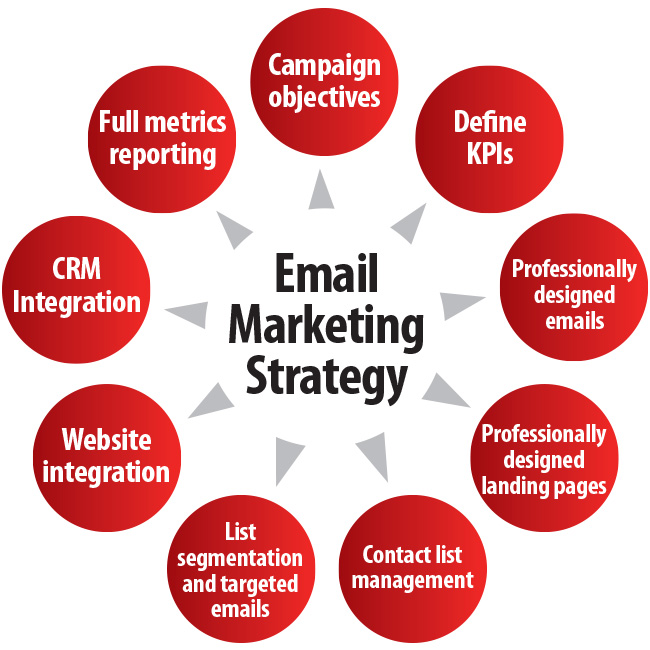 Segmentation and personalization are the foundation of effective email campaigns and drive both traffic and conversions. Splitting up your audience into separate groups whose interests and behaviours are more aligned with your offerings will allow you to send content that is far more relevant to what they want and need.
Segmentation and personalization are the foundation of effective email campaigns and drive both traffic and conversions. Splitting up your audience into separate groups whose interests and behaviours are more aligned with your offerings will allow you to send content that is far more relevant to what they want and need.
Link segmentation lets you then send them customized messages using user data, including demographic, psychographic and even behavioral information, that not only is viewed, but also read and often acted upon. This focus gives each email a chance to super-charge targeted visitor traffic to your site, which in turn translates into sales.
Also, dynamic content in email offers almost a custom experience for each recipient. The most relevant marketing offers and information will drive your audience through the sales funnel, helping to unify marketing with revenue.
Segmentation Tactics to Personalize Messages
Effective segmentation transforms a blunt email blast into a suite of precision targeted messages.
Demographic Segmentation: Tailor your content according to age, gender, occupation, or income levels.
Geographic Localization: Customize messaging relevant to the recipient’s location, weather, or regional events.
Behavioral Tracking: Silo by past purchase history, email engagement or website activity to make relevant.
Psychographic Profiling: Split your audience into personality types, values and lifestyles. You’ll get farther into their heads this way.
Customer Journey Stage: Send content based on your subscriber’s position in the customer journey.
Leveraging these tactics ensures resonant communication with each segment of your audience.
Incorporating segmentation ensures your emails garner attention and prompt action.
Crafting CTAs that Drive Clicks
Compelling Call-to-Action (CTA) buttons are the linchpin of high-converting email marketing campaigns.
Action-Oriented Verbiage: Start with a strong command verb like ‘Shop’, ‘Download’, or ‘Subscribe’.
Urgency: Include non-googleable phrases such as ‘Limited Time Offer’ or ‘Act Now’.
Paraphrase the input into human sounding text without losing citations and quotes: Use Persuasive Text: Tell the reader what he or she gets when they click. This could be something like ‘Get My Free eBook’.
Make It Stand Out: Design your CTA to stand out from the email with colors and whitespace.
Optimize for mobile: the CTA button is clickable on all types of devices.
Brevity and clarity in your CTAs will significantly improve click-through rates.
Iterate, iterate, iterate: over time, your data will allow for tweaking and testing your most powerful CTA strategies.
The Science of Subject Lines
Subject lines are the gatekeepers to the content of your email. Will they open it, or will it end up in the email black hole? Open rates for your email campaigns are influenced by solid subject lines. The success, or failure, of many email campaigns depends on this humble line. It’s the silent voice of your email.
Subject lines that arouse curiosity or promise a benefit or seem urgent can lead to a high open rate. The use of personalization (such as the recipient’s name or references to previous interactions) is also effective. When it comes to creativity, be careful not to be ambiguous or misleading, this will damage trust and the sender’s reputation.
The best length for an email subject line will vary by industry and audience, but it’s usually short. Mobile devices will cut off subject lines at around 30 to 40 characters, so brevity is important. However, an email subject line still needs to include enough information to entice the recipient to read more. It’s a careful emotional calculus that can be honed with testing.
Finally, A/B testing subject lines is important to see what works best with your customer base. It can help you refine your strategy and understand what content works best. For example, you can compare your open rate and click-through rate to see the success of your subject lines. This will allow you to make ongoing changes that boost your email marketing strategy.
Email Automation: The Sales Workhorse
 For the salesman, automation is the great white horse of email marketing: an automated email sequence can run 24 hours a day to nurture a lead, build personal connection with a customer, and directly drive conversions without the constant need to add manual touches. Triggered by user behavior or a date and time, a sequence of emails are sent at specific intervals designed to lead the recipient through a series of steps toward conversion. Whether it’s a welcome email, a post-purchase segment, or something in between, it is part of the journey towards a conversion and the automated sequence allows for scaling. Eventually, as the audience grows larger and larger, it will become effortless to scale up the audience while keeping the human connections intact to boost conversion.
For the salesman, automation is the great white horse of email marketing: an automated email sequence can run 24 hours a day to nurture a lead, build personal connection with a customer, and directly drive conversions without the constant need to add manual touches. Triggered by user behavior or a date and time, a sequence of emails are sent at specific intervals designed to lead the recipient through a series of steps toward conversion. Whether it’s a welcome email, a post-purchase segment, or something in between, it is part of the journey towards a conversion and the automated sequence allows for scaling. Eventually, as the audience grows larger and larger, it will become effortless to scale up the audience while keeping the human connections intact to boost conversion.
Nurturing Leads with Drip Campaigns
Drip campaigns are for relationship building What makes a drip campaign an email marketing tool par excellence? It’s a carefully calibrated sequence of emails that timed and targeted content to let subscribers ‘warm up’ to a company, giving it the opportunity to gradually build rapport with a customer.
Designed like a slow drip of water, steady, constant and sustaining, these campaigns deliver one message after another to leads over time, subtly sharing information and answering questions as they surface, gently guiding leads further down the funnel until they are all but ready to buy.
By taking a ‘drip’ approach, you’re targeting specific segments of your audience based on their behaviours or interactions with your company. You can reach them where they are in the customer lifecycle, and tailor your messaging based on their current needs, which in turn greatly increases the chances of conversion.
Eventually, that’s what drip is all about, a synthesizing of precision and patience. Although it works in stealth mode on your clients’ behalf, these campaigns do not stop enhancing your client’s brand relationships. At every stage of the sales process, the campaign is delivering content that’s meaningful at the moment of decision. That persistent nurturing builds a marketing ecosystem that drives more sales. Strategic communication has always been a core element of marketing success.
Behavioral Triggers to Re-engage Visitors
Behavioral triggers tap directly into visitor actions.
They are the ‘dark horses’ in the battle for re-engagement. Behavioral triggers, based on ‘data analysis to identify patterns in a user’s behavior’, can fire out responsive emails either when a particular user becomes more interested in your products or services, or is found to be drifting away. Cart abandonment emails are a good example of such a behavioral trigger, reminding a customer who has made a purchase decision but not yet completed an order, of products he or she clearly has an interest in.
These triggers act as subtle nudges, rejuvenating interest.
Emails triggered in real-time, that is, triggered based on an action a user takes within a given timeframe are much more relevant (and more likely to re-engage the user) than emails that are triggered by an action performed hours earlier. For example, browse abandonment emails can be triggered as soon as a visitor leaves your site without buying something.
Behavioral triggers amplify your connection with your readers through smart automation, such as product recommendations and time sensitive offers. They are also designed to re-engage visitors in a sales loop. One study in 2023 found that behavioral triggers in marketing campaigns led to conversions more than 300 per cent higher than a regular email blast, and logically, higher potential for customer retention.
Analyzing Data for Continuous Improvement
Email marketing thrives based on the constant analysis and optimization of campaign data. Trends and customer preferences can be detected, which can then be built into future strategies.
The process is iterative too, data analysis leads to recommendations for improving the user experience. By running detailed analyses on important metrics such as open, click-through and conversion rates, enterprises can understand what works and what doesn’t, and can then use this feedback to inform decisions on next steps, whether that’s messaging or design. Data-driven optimization can lead to higher engagement rates, and ultimately higher sales and more site traffic.
Moreover, it is a critical component of the strategic pivot: granular data analysis allows marketers to identify underperforming segments and adapt tactics to them, as well as cultivate a more intimate understanding of their audience. This kind of customization and responsiveness is crucial in fostering both loyalty and enhancing the power of marketing.
In short, companies have to start using the data to predict what is going to happen in the future, not just track what has happened in the past. Using predictive analytics can help forge pre-emptive strategies that can meet user needs, sharpen competitive edge and enable sustained growth in website traffic and sales conversions. Businesses leaning into data craft a more meaningful story around email marketing.
Future Proofing with Email Innovations
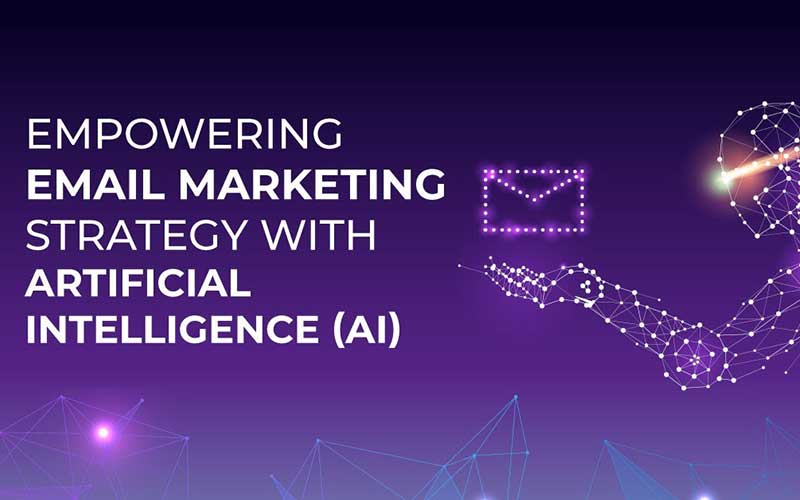 Because consumers change their behavior, and email marketing needs to be effective. Innovations will allow platforms to continue to perform. Yes, with artificial intelligence (AI) and machine learning algorithms, we should be able to start curating content in ways that fit your own preferences and behaviours.
Because consumers change their behavior, and email marketing needs to be effective. Innovations will allow platforms to continue to perform. Yes, with artificial intelligence (AI) and machine learning algorithms, we should be able to start curating content in ways that fit your own preferences and behaviours.
An example of this would be integrations that use email to effortlessly tie the experience together. Take the idea of email that syncs to real-time inventory updates, or one that uses augmented reality (AR) features to allow users to preview products in a more immersive light. Utilizing the fusion of email and new tech trends allows users to immerse themselves in the conversion process deeper, while also making it easier to get more sales and website traffic.
The ‘Internet of Things’ (IoT) could also be harnessed through email, with appliances and wearables alerting shoppers about deals or abandonment carts. Email marketing is likely to remain a vital tool for driving traffic and sales.
Integrating AI for Smarter Campaigns
Ai-driven analytics helps make your campaign more efficient, adaptive and strategic, it enables you to target exactly the right audience for maximum gain. Moreover, thanks to the combined power of these two new technologies, companies can now tailor their message to the specific customer much more than before, making their communication more personalized and ultimately more effective.
An AI segmentation tool separates out your customers into nuanced but meaningful cohorts, and refreshes the targeting of your messages so that they’re more likely to be not just seen but also felt, and so will enjoy much higher engagement rates.
Machine learning turns data into insights, predicting users’ moves, and automating interactions at just the right moment – always keeping engagement up, making emails more prescient than they’ve ever been.
Sophisticated AI could take these vast plethora of data and sift through them, spotting trends and automating A/B testing at scale. It wouldn’t be a case of ‘oh, I made that bit a harsh red, but it might work if I made it a more gentle blue, let’s try it and see’, it would be a case of machine-learning showing optimal campaign elements and shedding light on dark ad placement before marketing pound notes are spent. Think of how surgical the application of those resources could be.
You can also add intuitive AI-chatbots to email campaigns, where they can offer instantaneous consumer support or feedback, a tailored experience that can also act as a front line customer service rep. Such bots should ideally be representatives that drive increased retention and upsell, and would reside inside the email ecosystem.
In short, smart use of AI improves the customer experience. It turns a broadcast medium, email, into a conversational interface, enabling dynamic, data-driven interactions to drive sales and increase traffic to your website.
Adapting to Privacy Regulations and Trends
To maintain trust and compliance, email marketers have to navigate the maze of privacy rule-making.
Between the GDPR and similar frameworks that prioritize privacy, businesses are now more often required to obtain affirmative consent and provide clear ways to opt-out, and to respect data sovereignty.
In response to growing consumer demands for data privacy, marketers are being compelled to implement information strategies that maximize openness and accountability and ensure that information is protected and ethically employed.
Enhanced privacy controls encourage innovation in email marketing through more personalized content that doesn’t violate personal data integrity.
Acknowledging and embracing these trends helps brands project an image of being responsible and trustworthy, which supports the company’s bottom line and builds goodwill for years to come.
Leveraging Interactive Email Elements
It makes the email experience more interactive than ever: it invites the recipient to perform that action directly inside the email itself.
From embedded polls to surveys to interactive images, the opportunity to get involved and interact in real-time with content can help to foster a genuine two-way dialogue, which in turn can increase interest in the content, lengthen the time spent with it, and ultimately result in a lift in traffic and conversions. Interactivity bridges the gap between communication and action because every email can be a trigger point for a consumer decision.
In addition, interactive emails stimulate data collection. Through the analysis conducted on who clicked on what, companies improve their understanding of consumers and can refine their approach accordingly, designing the next campaign with better knowledge of their audience’s preferences and habits, and therefore making it more effective.
But rich, interactive elements dramatically lift the value of the experience you present to those in your email lists. As people become used to an ever more animated online experience, the ability to allow them to do things without forcing them to leave the confines of the inbox can be a key differentiator. Creating interaction in a thoughtful and clever way can lead to more website and other traffic and spike sales conversions, making email marketing an indispensable part of the modern promotions machine.


